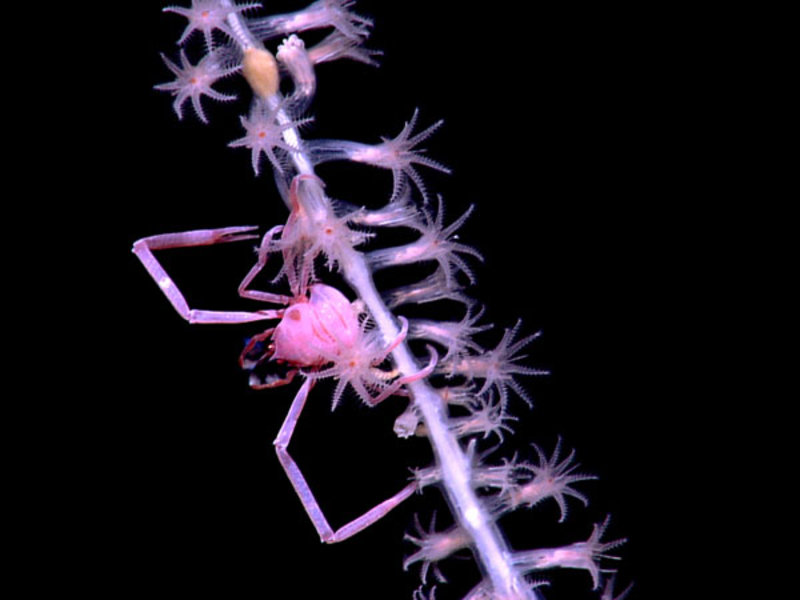
Close-up view of a bamboo whip coral with its associate squat lobster. Image courtesy of the NOAA Office of Ocean Exploration and Research, INDEX-SATAL 2010. Download larger version (jpg, 588 KB).

Close-up view of a bamboo whip coral with its associate squat lobster. Image courtesy of the NOAA Office of Ocean Exploration and Research, INDEX-SATAL 2010. Download larger version (jpg, 588 KB).
Chimaera
The Little Hercules ROV and Camera Platform capture stunning imagery of a deep-sea Chimaera. Chimaeras are most closely related to sharks, although their evolutionary lineage branched off from sharks nearly 400 million years ago, and they have remained an isolated group ever since. Like sharks, chimaeras are cartilaginous and have no real bones. The lateral lines running across this chimaera are mechano-receptors that detect pressure waves (just like ears). The dotted-looking lines on the frontal portion of the face (near the mouth) are ampullae de lorenzini and they detect perturbations in electrical fields generated by living organisms. Video courtesy of NOAA Okeanos Explorer Program, INDEX-SATAL 2010. Download (mp4, 28.0 MB)
Dive number 6 of cruise leg 3 is conducted at a seafloor feature referred to as "Landak". We started at the southern slope and proceeded up a very steep, rocky slope with a good northward current (0.25 knots). The abundance and diversity of fauna was low, dominated by bamboo whips, large sea lilies, hydrocorals, a couple of golden corals and sea fans with their squat lobster and brittle star associates. Also some sponges and shrimp. As we reached the sandy top the abundances of benthic megafauna dropped drastically. We continued moving east along the summit edge, encountering a dominant northward current. The abundance and diversity of fauna slowly increased as we moved shallower, dominated by sea fans, bamboo corals, sponges and actinarians. The observed abundance of sea lilies decreased compared to the beginning of the dive. Other observed fauna included shrimp, hermit crabs, fish, and squat lobsters and brittle stars associated with the corals. The most abundant fauna were sea cucumbers. The seafloor on top of the feature had a flat morphology dominated by reworked iron rocks. Towards the end of the dive glass sponges and sea fans became more conspicuous and abundant. In general the abundance of biota on this feature is among the lowest observed so far.